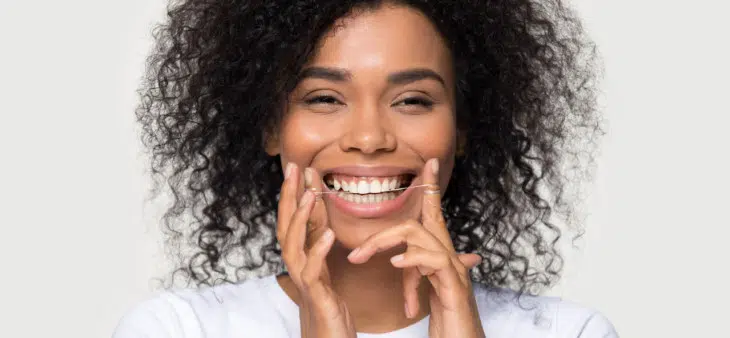
Everyone has a multitude of bacteria in their mouths, and over time, those bacteria form plaque on our teeth. We remove most of the plaque when we brush them, but the areas between our teeth and under the gums are missed while brushing. Only by flossing can we remove the plaque in those areas.
If we forget to floss, we leave plaque behind, which can cause multiple problems. As plaque builds up, it can turn into tartar, or hardened deposits on our teeth. Tartar makes our teeth look stained and is nearly impossible to remove without the help of your dentist or hygienist. Leaving plaque between our teeth also increases the likelihood of developing cavities in those areas.
Gum disease is another issue that can develop from a lack of flossing. The same bacteria that can cause cavities can also cause damage to your gums and bone. These bacteria irritate the gums and cause them to swell and bleed. If the gums are irritated for long periods, you will start to lose bone around your teeth, leading to tooth loss.
Preventing gum disease can also contribute to your overall health. Evidence shows that gum disease can be linked to an increased risk of heart disease. Studies have also shown that gum disease is connected with premature birth and low birth weight for pregnant women. And lastly, evidence has shown that bacteria can travel down to the lungs and cause pneumonia and other respiratory issues.
Flossing can be a tough habit to start. However, it only takes a couple minutes and can easily be fitted into your oral health routine. I have usually recommended that patients try flossing while watching TV at the end of the day. One objection I commonly get is that flossing “makes my gums bleed.” Gums bleed due to the lack of flossing in the past, but continued flossing will lessen the bleeding over time. You will also notice less, if any, bleeding during your next cleaning.
So remember to floss once a day to keep the bacteria away. If you have any questions on proper flossing technique or gum disease prevention, you can call our office, or we can show you at your next appointment.
